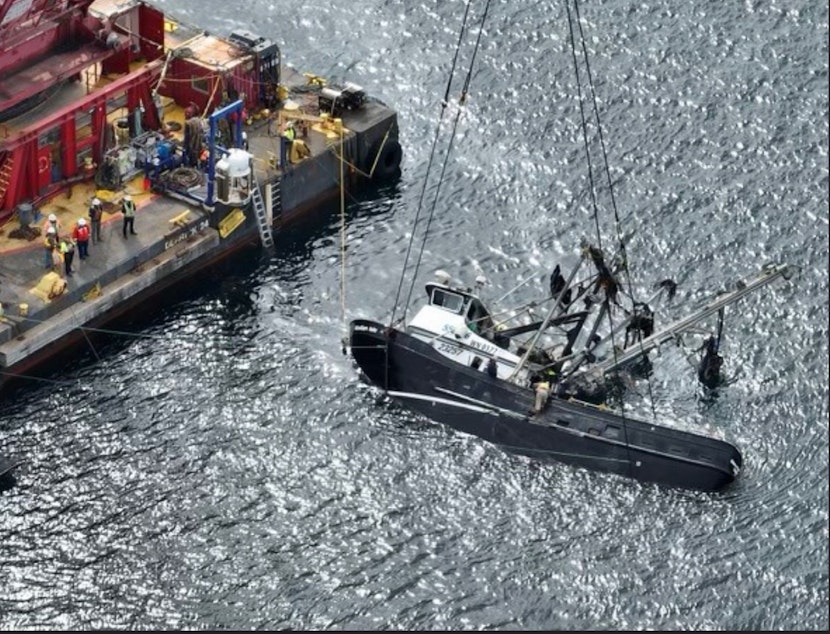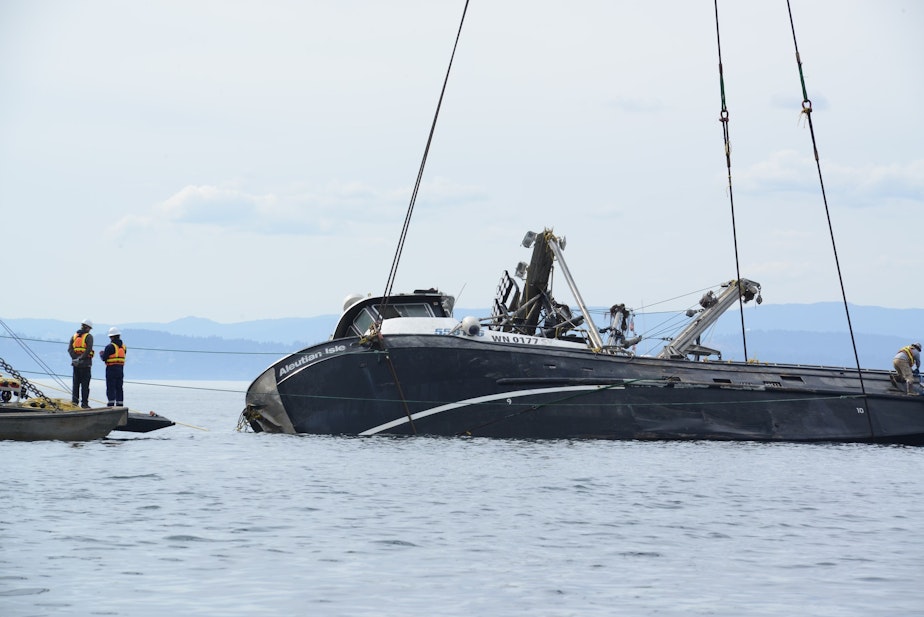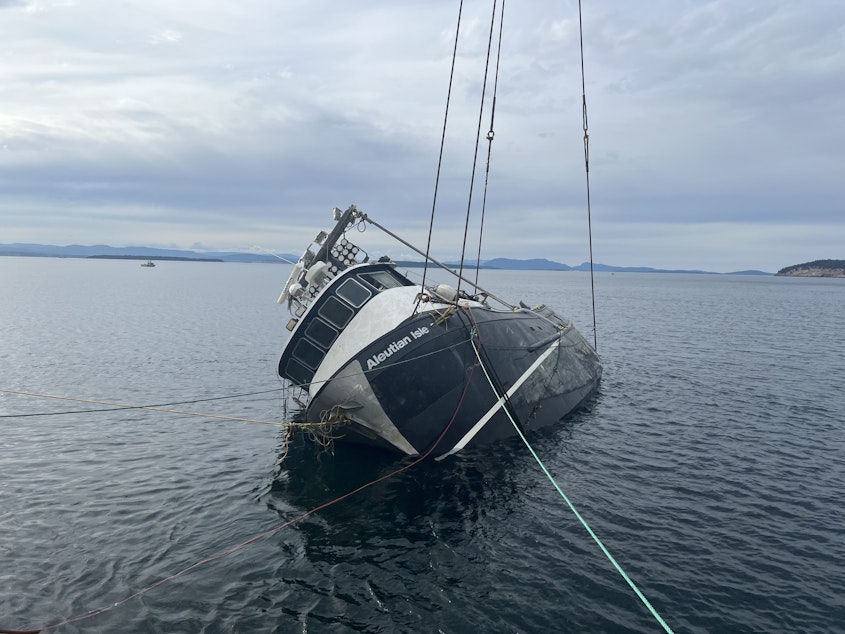Coast Guard postpones effort to remove sunken fishing boat after lifting it to surface

Salvage crews raised a sunken fishing boat from the bottom of the sea near San Juan Island Saturday, but they have been unable to remove enough fuel and seawater from the vessel to lift it onto a barge and transport it away from the critical orca habitat where it sank five weeks ago.
The Aleutian Isle, a 58-foot salmon fishing boat, released a 2-mile sheen of diesel onto the surface of Haro Strait when it sank. The unusual effort to lift it 240 feet from the sea floor was launched after officials decided pumping up to 2,600 gallons of diesel and oil still on board to the surface was not feasible at that depth in the swirling currents of Haro Strait.
After deepwater divers secured the boat with cables near its bow and stern, a floating crane lifted it toward daylight during a brief window of slower currents Saturday afternoon.
Even before it broke the surface around 2 p.m., onlookers from San Juan Island’s western bluffs said the air smelled intensely of diesel. Iridescent sheens of diesel could also be seen on the surface, but officials said the amounts were not more than they expected.
Boats towing absorbent booms mopped up what diesel they could, while 7,000 feet of boom protected key stretches of shoreline on San Juan Island’s west side.
“There are big dents on visible port side,” ocean-acoustics researcher Val Veirs, who lives nearby, reported shortly after the Aleutian Isle surfaced. Veirs said Saturday afternoon that crews were pumping “very dirty water” from the vessel lying on its starboard side, suspended in place by cables from above.
Sponsored
The salvage crews removed approximately 775 gallons of “oily-water mixture” from the Aleutian Isle, according to the U.S. Coast Guard.
Washington Department of Ecology spokesperson Ty Keltner said sea water and diesel remained on board late Sunday afternoon.
“The vessel is sitting on its side, and crews are unable to safely access the parts of the ship to remove the remaining water and fuel,” Keltner said by email.

Sponsored
“The unified command is reevaluating the best path forward,” a U.S. Coast Guard press release stated Sunday night.
“Raising the vessel to the surface is certainly a success, but the complexity of this operation continues to challenge our team,” U.S. Coast Guard Cmdr. Kira Moody said in that press release.
“Lifting the ship at its current weight may put too much strain on the vessel and it could break and spill,” Keltner said.

Sponsored
Coast Guard officials say the “likely” next step is to move the crane barge, with the Aleutian Isle still hanging off it, to a sheltered location where they can secure the boat and its fuel “with far less risk to our divers and crew and better protect the environment.”
While toxic to orcas and humans alike, diesel floats and evaporates, making a diesel spill less catastrophic than a spill of crude oil, which persists, remaining deadly to marine life for decades.




